Solving a Yemeni culinary mystery with the help of a student/neighbor and making new friends in the process.
story
Ever since first tasting Fahsa from the Yemen Cafe here in Brooklyn, I’ve wanted to learn to make it. I’d been doing all sorts of research but hadn’t quite landed the recipe I thought would get me to what I was enjoying at Yemen Cafe.
I was also confused about Mereg which was one ingredient in some of the recipes, but appeared to be a soup in its own right (did I really have to make one soup, in order to make a second soup? And if so, was the same meat used?).
At some point in 2017, at one of my volunteer sessions at the Arab American Family Support Center (AAFSC), I tried to use these culinary questions as practical convo for our English conversation practice but it proved a bit too complex.
A weeks later I had the guts to ask my server at Yemen Cafe for help. I had just polished off yet another bowl of Fahsa, and showing him my recipe printout and notes, begged him to help me understand…. didn’t really get much farther.
And then in early 2018, I finally got up the nerve to ask a neighborhood mom whom I initially met at AAFSC, but now also saw most weeks because our son’s were in adjacent classrooms. I first invited her for Biryani at our house (I was often asked for my recipe at the AAFSC) and asked if someday she would give me Yemeni cooking lessons. She asked to set a date immediately for that and we were off and running!
She brought her two children and two friends to help with the cooking. They wouldn’t let me help, but instead told me to take good notes while they demonstrated. Every now and again my daughter tried her hand, but otherwise, our kids made fast friends while the ladies and I were in the kitchen.
What a feast! Our daughter loved the Fahsa so much that she requested that I put it in her lunch this week! And dear son is still smitten by the Kidem, ever since that surprise treat one morning last week.
music
Methal & Yemen Blues
I had asked ahead of time if there was any music I should have playing but my new friends didn’t have anything in mind.
The day they came over for the Yemeni home cooking lesson I opted to play Methal who I learned about it via Spotify’s “I’m with the Banned” series (watch the video featuring her here). I love her vibes and her lyrics are great.
BUT, soon after that lesson I came across Yemen Blues and became obsessed, even seeing them live in New York City a couple times. Since then, their music is not only a part of our regular rotation, it’s a requirement when we eat Yemeni food (home cooked or ordered from Yemen Cafe).
music
Yemen Blues Live
I’ve seen Yemen Blues live a few times in NYC and they were incredible shows. This video of them playing Jat Mahibathi (incidentally my fav of their songs) in Old City Jerusalem is pretty fabulous.
recipe
The Menu
The first big lesson was that that the difference between Fahsa and Salta really depends on who you ask! I thought Salta was vegetarian and Fahsa had meat but they said that is only true in some areas. Some people call even the vegetarian version Fahsa. The types of “typical” meat (lamb, chicken and even fish!) and vegetables also changes by region. On top of that, family preferences dictate the recipe so there are many variations.
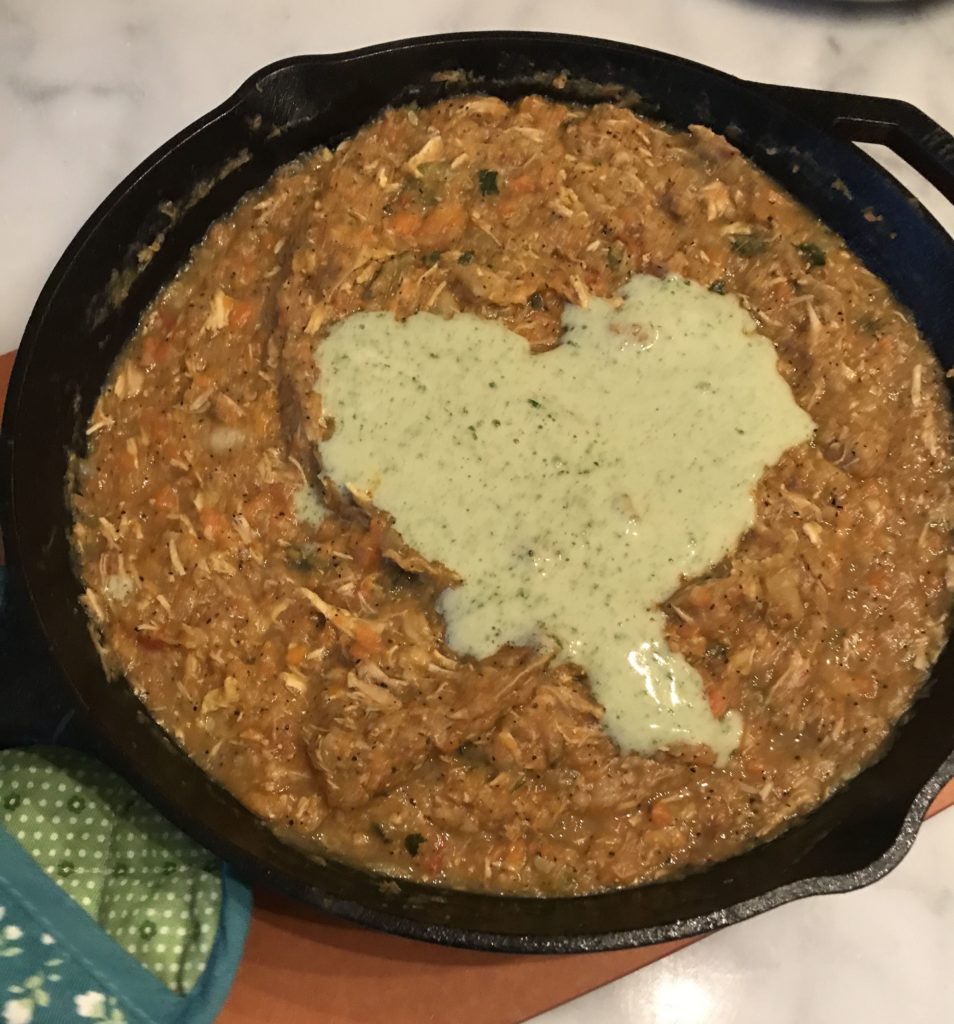
I think a good equivalent is chili here in the US. There is no one way to make chili. It can be vegetarian or full of meat, and both of those versions vary wildly. The meat can vary from hunks of a single type of meat, to a variety of ground meats, or even just be based on some kind of sausage, and probably includes one or more types of beans. Vegetarian versions are likely heavier on beans and often have tofu or other substitutes.
At any rate, the below recipe will provide the foundation, and you can try other vegetables and meat as you wish.
The Mereg (pronounced more like “morocg”) is the initial soup that is made, where the chicken and veggies cook in the broth, and then the Fahsa/Salta is a separate dish, which is made using the Mereg as a base, but transferring it into a madara (a special stoneware pot), mashing the veggies adding shredded meat (if desired), and possibly other veggies (they added okra to mine, which had been sauteed with oil, garlic and a bit of potato).
Recipes for the following are below, in the order in which you should start them for your own feast!

- Bread, if you are making! (I’ll need 2-6 hours of rising depending on the type you choose: khobz or kidem or…)
- Hulba (needs alternating time in the fridge and getting hand beaten)
- Mereg
- Shafuut
- Rice
- Sahwk
- Fahsa/Salta
- Yemeni tea
Have on hand:
- Kidem, khobz (or other Yemeni bread, or store-bought pita in a pinch).
- Large pot to eat out of, family style.
recipe
Hulba
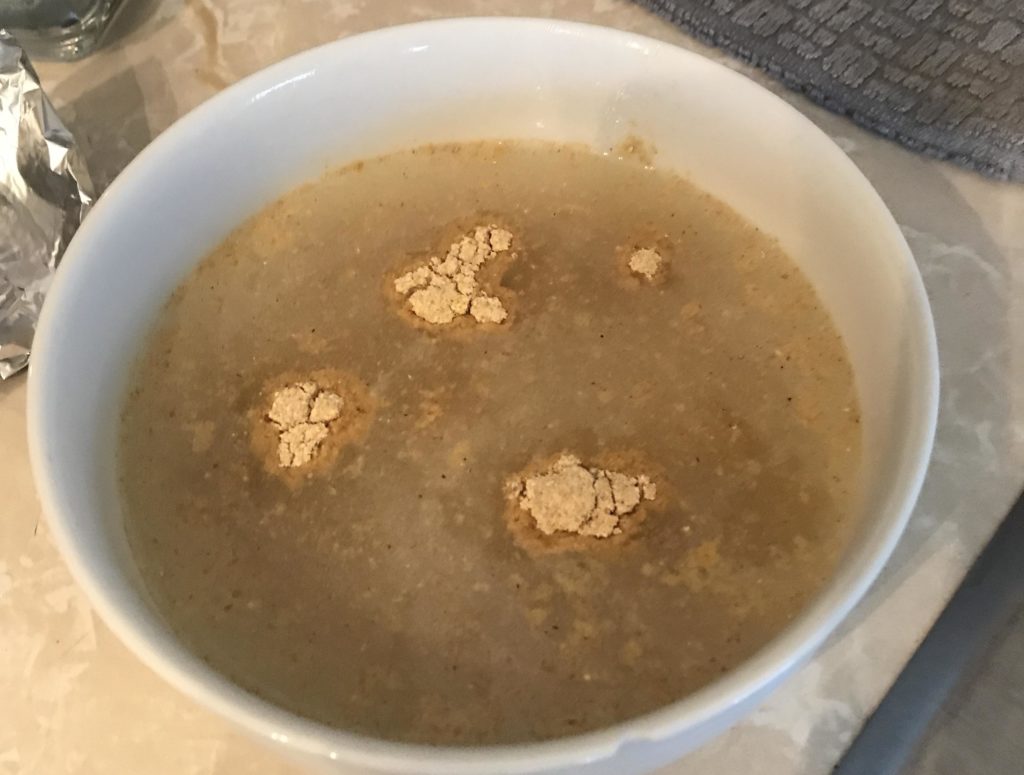
Hulba
NOTE: If whipping by hand, expect it to take about 20 minutes. This is how we did it, though I’ve seen some recipes that appeared to use some sort of a mixer.
Ingredients
- 1 tbsp ground fenugreek
- water
- 1 seeded green chili optional
- 1/2 tsp salt or more to taste
In a 3:2:1 ratio:
- 3 cilantro leaves/stalk
- 2 parsley leaves/stalk
- 1 whole sprigs mint
Instructions
- Put the ground fenugreek and water in a medium-sized bowl and put it in the fridge for several hours (5 is recommended, but ours ended up being about 2.5).
- After at least 2 hours in the fridge, when the fenugreek has absorbed some water, carefully pour off the excess water and begin to beat it with a fork. It will take a good amount of effort and will begin to get fluffy and turn from brown to white/ pale green. [side note: I would love to know the history of this. Who sat around whipping this for so long to discover the flavor and texture?!]
- You may need to give it (or really your arm) a rest for a bit, and if so, put it back in the fridge, then beat it some more when your arm is ready.
- When good and fluffy, prepare the herb/heat additions: put the 3 herbs and chili (if usinin a food processor with a tad of water and chop well. Add to the fluffy fenugreek along with some salt and mix. Add salt to taste.
- Keep in the fridge until ready to use it to top the Fahsa/Salta.
recipe
Mereg
Mereg
Ingredients
- 1 onion, chopped fine
- 2 tbsp sunflower oil
- 3 cloves of garlic, minced
- 2 tomatoes, chopped
- 1 whole chicken, skin removed, and into large chunks
- 3 tbsp cumin/black pepper/turmeric mix
- 3 tsp salt (or more, added at various parts, to taste)
- 3-4 carrots, peeled and in large chunks
- 2 medium potatoes, skinned and cut into 2-3 inch chunks
- 3 small zucchini, 2 inch chunks (skins on is fine)
Instructions
- In a large pan, cook onions in oil until beginning to brown. Add garlic for the last 2 minutes.
- Add tomatoes and cook for 2-3 minutes. Add chicken, mixing to cover. Cook uncovered, stiffing frequently.
- Add spices and salt, increase heat to medium high and cover, cooking for about 20 minutes.
- Add carrots, lower the heat to medium and continue to cook, covered (5 minutes)
- Add potato and zucchini and continue to cook, covered (10 – 15 minutes).
- Add a bit more salt, and boiling water until just about covered and cook on low for 20-30 minutes.
recipe
Shafuut
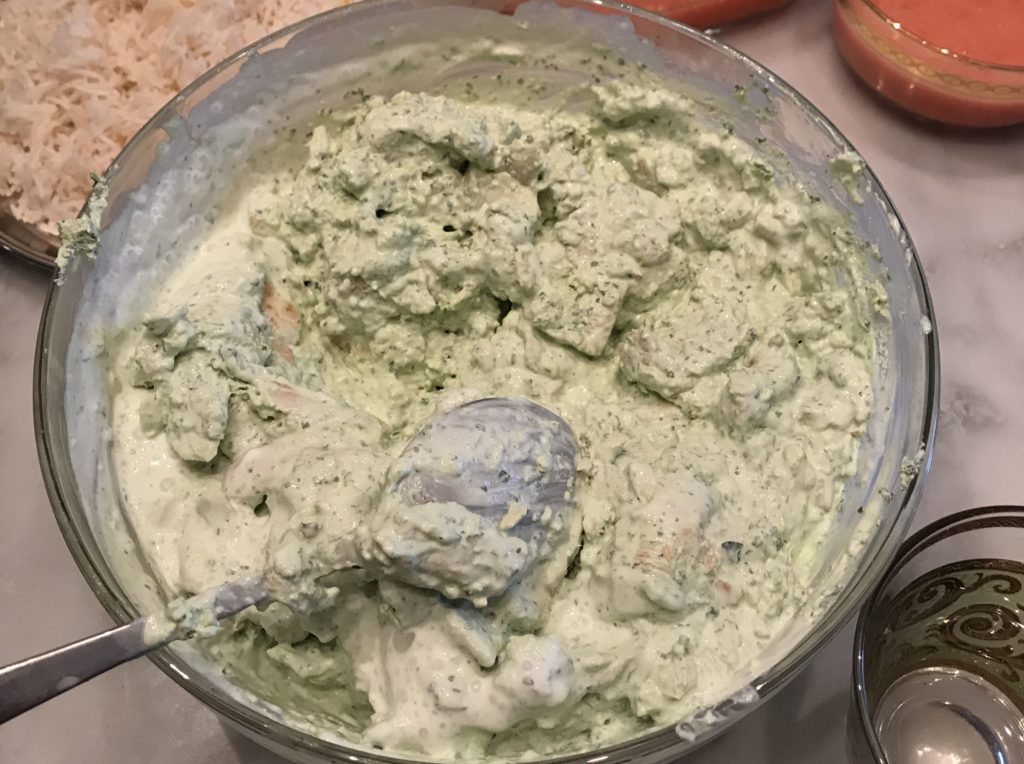
Shafuut
Ingredients
- 3 cups sour cream (at least)
- 1 cup loosely packed cilantro
- 1/2 cup loosely packed parsley
- 1/2 cup loosely packed mint leaves
- 2-4 cloves of garlic
- 1 cup water
- 1 green chili (optional)
- 5 pitas (at least)
Instructions
- In a food processor, put 2 cups of sour cream plus everything else except pita bread and combine.
- Warm 5 pitas on the stove top burner.
- Pour the sour cream herb mixture into a large bowl. Rip bits of the pita and drop it in, stirring to cover the bread.
- Put in the fridge for some time. As the bread absorbs the moisture, you may need to add more sour cream & water. Mix the sour cream/water in a small bowl, then add to the Shafuut.
- Eat as is, or with Sahwk (a spicy tomato, chili, garlic herb condiment, made fresh. See below.
recipe
Rice for Yemeni Feast

Rice for Yemeni Feast
Ingredients
- 2 tbsp sunflower oil
- 2 cinnamon sticks, broken into pieces
- 20 cardamom, in pod
- 20+ cloves
- 2 cups Basmati rice
- 4 cups boiling water
- Food coloring (we used a few drops of red and yellow, but they would usually use orange… need to get name/type.)
- salt to taste
Instructions
- Heat oil in a large pot. Add whole spices until they sputter. Add rice and fry a bit.
- Add boiling water and stir to combine.
- Cover and cook until rice is done. Add a bit of food coloring at the end.
- Serve with chunks of meat and/or veggies from the Mereg (refer to the top of the photo at the top of this post).
recipe
Sahwk
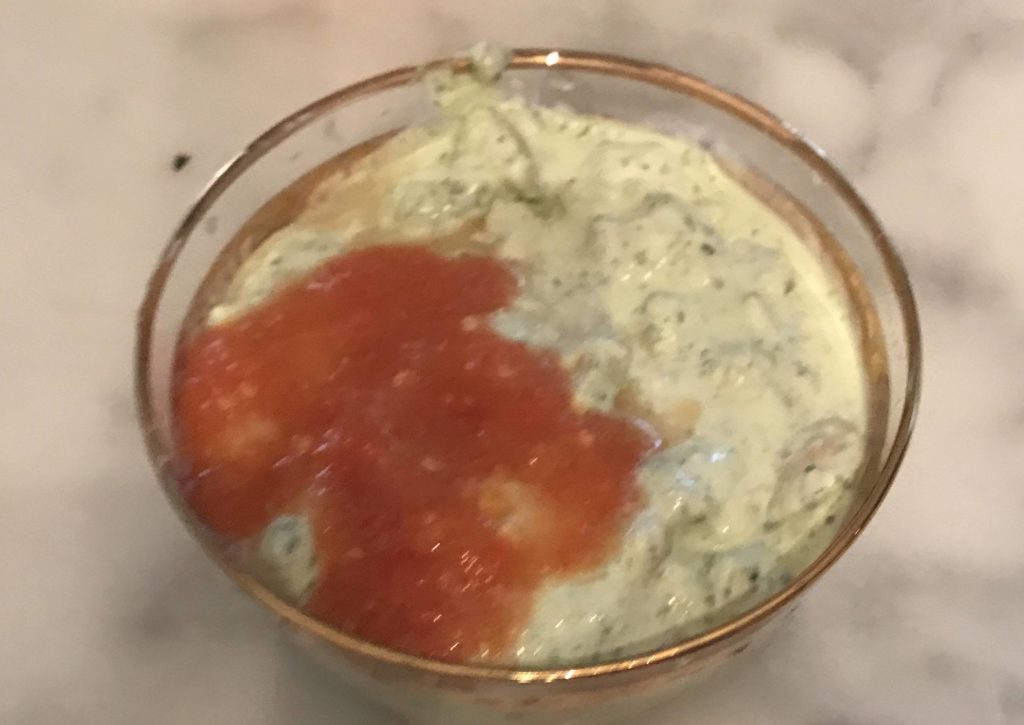
Sahwk: Homemade Yemeni Hotsauce
Ingredients
- 4 tomatoes
- 3 cloves of garlic
- 10 hot red chilis
- 1 1/2 tsp salt (or more to taste)
- 1-2 tbsp water (or more as needed)
Instructions
- Put all ingredients in a food processor and chop until well combined. Taste and adjust per your preferences.
- If you will be dining with spicy-averse, make the same without chilis or only one chili, perhaps.
recipe
Fahsa/Salta
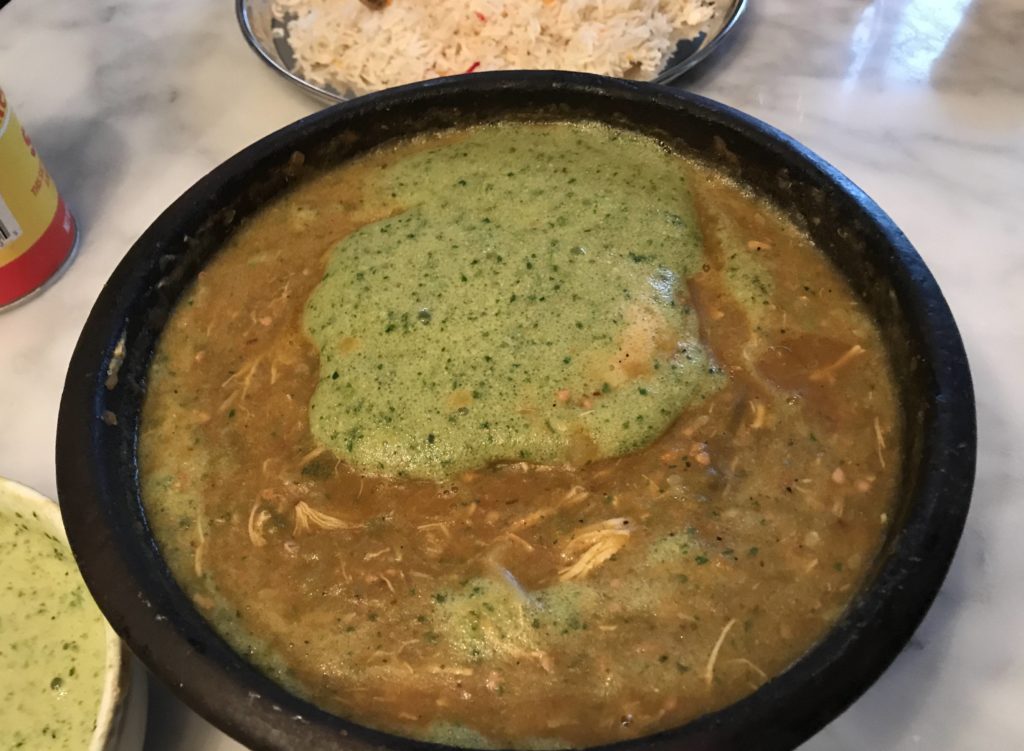
Fahsa/Salta
Equipment
- a pot to prepare and serve it family style (see note above)
Ingredients
- ~3 cups of Mereg (broth, veggies and meat)
- other cooked veggies you have on hand (they put in some sauteed okra)
- more salt to taste
- 3 spoonfuls of Hulba (see above)
- Kidem or Yemeni flat bread to eat it with**
Instructions
- In and unheated madara or cast iron pan, mash up about half of the veggies from the Mereg, using a fork. Add a bit of broth to help it along. Here is where you would add in any other desired veggies.
- Once good and mashed, add some of the meat, shredded into small pieces, careful to discard any bones, and add more broth if desired.
- Put the pan on the stove and heat the Fahsa on medium heat for at 15-20 minutes to allow flavors to combine. Add salt to taste.
- When ready to serve, add scoops of Hulba on the top and do not stir it in (make the island!). Serve with Kidem, Yemeni flat bread, or even pita.
Notes
recipe
Yemeni Tea
Yemeni Tea
Ingredients
- 2 1/2 tsp Al-Kbous loose tea
- 2 cups water
- 6 cloves
- 6 cardamom pods, cracked
- 1 1/2 tsp sugar
- sugar tbsp evaporated milk optional
Instructions
- In a pan with a spout, heat 2 cups of water, tea, cloves, cardamom pods and sugar.
- Once boiling, let steep for 2 minutes.
- If desired, add 1 tbsp evaporated milk, stir to combine and turn off the heat.
- Enjoy immediately, or later as it’s quite nice chilled, as well.
Bonus
Yemen Blues Instrumentation
You can hear a bit about their instruments on this great video, care of Pickathon.